Klaus Fuchs — Atom Bomb Spy — The First Atom Bomb — Crime Library
It was a bright sunny day in New Mexico, the sort of dry, hot day that is the hallmark of the American Southwest. The intense sun reflected off the light tan buildings, blinding anyone out in the noonday sun without sunglasses. On a small attractive bridge situated in the heart of Santa Fe, two men met. One was in short sleeves and khaki slacks, of average height, slim and somber, with steel-rimmed glasses and clip-on sunglasses. The other was short and dumpy, incongruously wearing a fedora and a raincoat. He was dressed inappropriately for the desert heat, and was squinting against the bright sun and its reflection off the bone-dry buildings.
They came together on the bridge, in full view of anyone who would care to glance their way. No one noticed them they were merely two of the many strangers that had appeared in Santa Fe during the war years. However, on this June day in 1945, this apparently innocent meeting was not a casual happenstance. The taller of the two men handed an envelope to the short, fat easterner.
It contained the principal elements of the design of the atomic bomb.
This was not the first time the two had met. Five or six times prior to the meeting on the bridge in Santa Fe, the taller man had given the shorter one envelopes containing scientific documents. These other meetings had been in New York. Most of them were brief, lasting only a few minutes. The two men did not really know each other. The short man the courier was known to the taller man only as “Raymond.” In New York, four days after the meeting in Santa Fe, the courier delivered the envelope to his Russian contact, just as he had delivered similar packets of secrets after other meetings.

Trinity (CORIBS)
A month after the Santa Fe meeting, in July 1945, the Trinity Test the explosion of the first atomic bomb took place in the New Mexico desert. The taller man watched the momentous event from the bridge, five miles from the desert explosion. After all, he had a vested interest in this unique detonation. He had helped to make this new and terrible weapon. He watched as a column of orange fire blossomed into a huge, white mushroom cap. A month after that, in August, the United States dropped the atomic bomb on Hiroshima. The nuclear age was now official and public.
Then, on September 23, 1949, four years and a month after Hiroshima, President Truman announced that the Soviet Union had detonated an atomic bomb. The exclusive possession of the greatest weapon of mass destruction then known to man was no longer the sole province of the United States. The Cold War now had a new element the concept of shared mutual destruction.
How could this be? American scientists had assured the president and his advisers that Russia’s development of the atomic bomb was at least two years off, perhaps as many as five years in the future. Could the Russians have been making more rapid scientific progress than we believed? More significantly, had they somehow stolen our secrets?
A few months after the Russians tested their atom bomb, a British physicist who had worked on the Manhattan Project the American atom bomb at Los Alamos, New Mexico, and who was now the assistant director of the British atom bomb project at Harwell in England confessed that he had indeed been passing atomic secrets to the Russians. He was the taller man from the bridge.
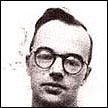
Alamos
His name was Klaus Emil Fuchs, and he was, as it has been shown by history, the most important atom spy in history. Not any of the notorious names in the saga of the theft of the atom bomb secrets Allan Nunn May, Julius and Ethel Rosenberg, and David Greenglass had been as important to the Russian effort as Klaus Fuchs.
Even the famous Cambridge University spies Philby, Burgess, Maclean, and Blunt had not done as much damage to American and British secrecy. Only a young American named Theodore Hall, working at Los Alamos during the same period, provided as much information as Fuchs, and then only to confirm what Fuchs had delivered to Raymond, the short courier.
Who was Klaus Fuchs? What motivated him to betray Britain, his adopted country and her allies? What exactly did he give the Russians? What makes up the personality and psyche of the greatest of the atom spies? How was he caught?
With the exception of the last of these questions how he was caught there are only partial answers. Fuchs was, as Winston Churchill said of the Soviet Union, “an enigma wrapped in a mystery.”
Five years before the fateful meeting in Santa Fe in 1940, Klaus Fuchs looked out at a barren Canadian landscape through the chain-link mesh of an internment camp. Britain had decided that German nationals posed a security threat, and Klaus was a victim of these concerns. The ocean crossing from England to Canada had been harrowing; the tiny merchant ship was constantly under the threat of attack from German U-boats. He walked the perimeter of the eight-foot-high fence hour after hour, and then returned to a wooden barracks of unpainted wood to lie on a hard bunk and read. Marx. Engels. Scientific papers of Heisenberg, Einstein and Bohr.
Life consisted of walking and reading, without any contact with the outside world, any knowledge that as he languished in the internment camp for German aliens, his adopted country was engaged in the Battle of Britain. Not far from his University, Birmingham, the city of Coventry was being devastated by the Nazi bombers, its magnificent cathedral reduced to a few skeletal walls.
May slipped into June, and then months followed. If it hadn’t been for the gifts of scientific papers from Isaac Halperin, whom he never met, Fuchs would have become suicidal, like some of his fellow internees. The Canadian authorities at least supplied cigarettes, and Fuchs smoked incessantly while he walked and read.
Suddenly, on a bleak December day, Fuchs was released. The German internees would be returned to England. Many of them were too well educated, too well-trained, not to be used by the British in the war effort. After nine months, Klaus Fuchs was finally allowed to return to carry out the work for which he had been so thoroughly prepared theoretical physics.
He stayed with friends in Birmingham. He was a good friend, and one whom his English hosts could rely upon to be cheerful and helpful. His professors had not deserted him, and worked to find him a research position. By May 1941, he had returned to working on theoretical physics. The project had the curious name, “Tube Alloys.”
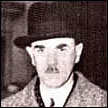
He was among friends. Rudolph Peierls was his old teacher and Michael Perrin was the assistant director at Tube Alloys. Both would figure prominently in his future. The work was exciting, and the long hours were filled with the satisfaction that they were working together on a new idea, one that had accelerated since Enrico Fermi had split atoms in the United States a year earlier. The idea was the atom bomb. “Tube Alloys” was nothing less than the British atom bomb project.
Fuchs was happy. Here he was a member of a family, where he could relax with a good many whiskies and dance with his colleagues’ wives. If only the war had been going a bit better for the allies, including Soviet Russia, life would have been fully wonderful.
What he couldn’t understand is why the British, Americans and Canadians shared information on the development of this powerful weapon with each other, but excluded its other ally, the Soviet Union. Surely the British and Americans were not intending for Germany and Russia to kill each other off. Besides, Fuchs knew that the eventual salvation of humankind resided in the success of communism, not in the exploitive system of capitalism. He liked his English friends, but he believed that his unseen Russian comrades were striving for a better world. He had to do something.

1948 (POLICE)
The next morning Fuchs arrived at London’s Paddington Station, walked about a half a mile to the Russian Embassy, and asked to see the military attaché. A tall, urbane man met him in the outer office, ushered him into his sanctuary, and asked what he could do for him. The attaché, Jurgen Kuczynski, was precisely the right man in the embassy for what Fuchs had in mind. He was, in effect, the coordinator for spying operations in Great Britain, a member of the Directory for Military Intelligence. He offered Klaus a glass of tea, in the Russian style.
Klaus Fuchs’ career as a spy had begun.
The attaché told Fuchs that he would be in touch, that a girl from Banbury would contact him.
In July of 1942, Fuchs was not yet 31 years old, working on unclassified projects within a highly classified endeavor and soon to become a British citizen. It was a very long way from where he had begun life in Russelsheim, Germany, in 1911.
It was prophetic that he would end up in England. His father, at one time a Lutheran minister, had become a Quaker, and had visited Quaker friends in England before World War I, before Klaus had been born. There was an affinity there, between the Fuchs family and the British.
While he could remember little about the First World War, Klaus remembered a happy childhood. At least, his memory of it was happy, although his dedicated father, Emil, seemed more intent on instilling a gentle moral discipline than in imparting affection. He could hardly recall his mother, although she hadn’t been dead for much more than 10 years. Perhaps it was her suicide that caused him to forget her. He couldn’t remember taking a leave from his university studies to attend her funeral.
His sister Elisabeth was the oldest. She was passionate about everything. She married a fellow radical and had a son. She was imprisoned on several occasions for her political activities by the Nazis, and, in 1939, she jumped from a bridge into the path of an oncoming train while being pursued by the Gestapo. Gerhard, his older brother, had been expelled from law school for political agitation, and he, too, spent time in prison.
The entire family was intense, even baby sister Kristel, who had been diagnosed a schizophrenic. Kristel eventually went to Swarthmore College in America, but was in and out of mental hospitals during her college years. Above all, the Fuchs children were taught well by their father, Emil. They were put on earth to serve, to uphold ideals, to be respected for their beliefs. Klaus found out about the costs of maintaining one’s ideals.
* * *
He remembered another train ride, a frenzied ride through Germany to Switzerland, in 1933. The Nazis were looking for him.

During Klaus’s university days, students were ardent in their support of their political parties. Klaus had joined the German Socialist Party, thinking that it was the strongest alternative to the growing power of Hitler and his Nazi Party. Then, when the socialists deserted their ideals to allow Hitler to come to power in the elections of 1932, Klaus became disenchanted with his fellow socialists, and joined the German Communist Party, the only political group actively resisting Hitler. Early in 1933 the Reichstag burned, and Hitler blamed it on the communists. Klaus was on his way to a party meeting in Berlin when he heard the news. There was no avoiding it. He had been a vocal and very visible campus communist, and they would come after him. He had no choice but to escape. Fortunately, the train to Berlin was only half-filled and was scheduled to continue on to Switzerland. During the seven-hour train ride, he was able to move from empty compartment to empty compartment, staying ahead of the officials who were moving up and down the corridors, checking identity papers.
Once in Switzerland, he boarded another train, this time to Paris. The long, slow train ride brought him to Paris in the early morning, and, with his small suitcase and a slip of paper with the names of some Quaker friends of his father, he made his way through the half-dark streets. Paris would be his home for several months, and then he would make his way to England, again with the help of his father’s Quaker friends. Now, the battered suitcase had been replaced with a canvas bag. All of his worldly possessions had been reduced to a single canvas bag.
Klaus felt at home in England. The political authoritarianism that had existed in Germany throughout Klaus’s youth and young adulthood was unknown in England in the 1930s, even with the contentiousness of the numerous political parties widespread throughout the British Isles. Debate was everywhere, and Klaus could express his Marxist views without worrying about retribution. It was an intellectual climate, rather than a repressive one. One could discuss politics civilly.
Besides, he loved Bristol and the countryside around it. Working on his doctoral degree didn’t allow for much exploration the hours were long, and the research stimulating but what he saw of England reassured him “this green and pleasant land.” His hosts were kind, his professors supportive, and weekends allowed for pleasant conversation, dancing, and plenty of social drinking.
After obtaining his advanced degree, Klaus, with the glowing recommendations of his professors, was able to get a research position in Birmingham. Now, with a modest income and modest needs, he had a place of his own, and a fulfilling life of scientific investigation. He had friends, and a good life.
Then came the war, and internship in Canada. “I didn’t harbor resentment against my adopted country. They did what they had to do. I understood.” he said years later.
By 1942, when he began spying, Klaus’ well developed “controlled schizophrenia” (as he called it) began to assert itself. It was the ability to compartmentalize his feelings. It was to be a useful ability when he betrayed his friends, allowing him to grow more and more fond of them while he was giving away their secrets.
* * *
In mid-1942, after Klaus had joined Tube Alloys, the meetings with the girl from Banbury began. Although Klaus was not aware of it, the “Girl from Banbury” was in reality Jurgen Kuczynski’s sister, Ursula. In true espionage fashion, the meetings were furtive and brief. At first, Klaus would only pass on information about his own scientific work, giving Ursula copies of his research papers that were restricted in their distribution. It wouldn’t do, he thought, to give away the work of others. It was not, as the English would put it, “cricket” to exploit the work of his English colleagues.
The work went well. Klaus’s contributions to the Tube Alloys project became more and more significant, and Michael Perrin thought that it was time to make sure that Klaus had access to classified information so that his work could be an even greater contribution. Perrin sponsored Klaus for citizenship and in September Klaus Fuchs, German émigré, swore allegiance to the crown of England, and became a naturalized British subject. Even though his past as a member of the German Communist Party was known, there was no reason to suspect that Klaus had been an active communist since his arrival in England some nine years before. The project needed him, and he had responded with exemplary work. Ironically, Klaus became a citizen just when his career as a spy was beginning.
Klaus Fuchs, British citizen, vouched for by his superiors, was about to embark on the most interesting part of his career as a spy. Perrin spoke to him one day about the increasing cooperation between American and British scientists working on the atom bomb. He asked Klaus to go to America as one of his delegates.
In December of 1943, Norfolk, Virginia, was teeming with wartime activity. Ships were in various stages of construction, sailors and ship builders were everywhere. It was a vibrant, busy place. Klaus and his four colleagues landed there, after an uneventful crossing that was considerably different than the desperate trip of four years before, when he had been packed on the small merchant ship that had brought him to Canada and his nine months of virtual imprisonment. This time he came as a respected British citizen, on his way to further the war effort.

After some preliminary check-in, the British scientific delegation took a train to Washington, D.C., where loyalty oaths were signed and Klaus’s reliability was attested to by Perrin. Then they boarded another train, this time to New York City, where the British were to assist in the research going on at Columbia University. Once established in a small residential hotel, there was an opportunity to visit his sister Kristel, married and living in Cambridge, Massachusetts. But first, there was a meeting to be held, a meeting with a man named Harry Gold, who was known to Klaus only as Raymond.
Before leaving England, Klaus had been instructed on how to meet his new American control. For several months prior to leaving England, he had been delivering new information to his Soviet control, Ursula, material that was more than just his own work. He was delving deeper and deeper into espionage. In true clandestine fashion, Klaus was to meet a man in New York City, at a prearranged spot, carrying a book with a yellow cover. His contact would be carrying a package, wrapped with brown paper and tied with string. They would spot one another, take different subway trains to a second prearranged location, and establish contact. And so it was.
With the arrival of the New Year 1944, Klaus Fuchs’ career as a spy on American soil had begun.
* * *
The information passed to Harry Gold became more specific. Gold would be instructed to ask Klaus for specific information, questions that had come from the Russian scientists, to the KGB, to the controller, Yakovlev, and then to Gold. In addition to answering the questions posed to him, Klaus was able to provide details about the processing of nuclear material, then being carried out at Oak Ridge, Tennessee, particularly about the process of gaseous diffusion. The separation of Uranium 238 into Uranium 235, and subsequently to Plutonium, was being achieved much more efficiently than the Russians could have imagined. This material became the ultimate substance of the atomic bomb. At the time, Russia had a great deal of Uranium 238, but not much of an idea on how to obtain large quantities of this concentrated fissionable material. Atom bombs could not be as large as garages.
Gold and Klaus had an uneasy relationship. The quiet, introspective Fuchs found that the nervous, furtive Gold made him uncomfortable. He seemed to know something of science, particularly chemistry, but was inept when it came to principles of physics. He was not someone with whom Klaus could discuss the essence of the science of atomic physics. This near ignorance amused and, at the same time, irritated Klaus. It was like discussing physics with someone who had had only the introductory college course, and then had not done very well with it.
Still, Gold tried to develop a sort of friendship with Fuchs, but Klaus was not interested in having dinner, or a couple of social drinks, with his courier. Reluctantly, on two occasions, the odd pair met for dinner. Klaus filled the air of the bar with cigarette smoke, while Gold kept his coat and hat on, squinting across the table at his prize spy through the smoke, attempting to make small talk with this strange man with the English-German accent who would reply to questions with single words, often monosyllables. It was like trying to draw responses from a stone, Gold thought. The courier learned little about his spy, although Fuchs was able to learn that Gold was from Philadelphia, and knew enough chemistry to perhaps have worked in industrial chemistry.
In August 1944, Gold suddenly found himself in a dilemma. Fuchs had failed to keep a planned rendezvous and, even more upsetting for the easily perplexed Harry Gold, Fuchs failed to meet him at an agreed-upon back-up location. Now, Gold was faced with the unpleasant task of reporting to his superior (A.A. Yakovlev) that Fuchs had disappeared. Yakovlev instructed Gold to visit Fuchs’s sister in Cambridge.
Kristel was suspicious of the strange little man who was at her door. He claimed to be a friend of her brother, but he didn’t seem like the type of person Klaus would have as a friend. He was too common? Insignificant? Colorless? She wasn’t sure. Still, he seemed to know something of Klaus’s career as a scientist, so, against her better judgment, she told him that Klaus had been transferred “somewhere in the Southwest,” and that he would be returning to visit for the Christmas holidays. Gold asked Kristel to tell Klaus to get in touch with him.
They met in January, in Cambridge, with Klaus standing awkwardly on Kristel’s front steps. They agreed to meet again, on a date in June, on a bridge in Santa Fe.
Harry Gold reported his success in reestablishing contact with their most important spy to Yakovlev.
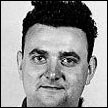
(CORBIS)
“Good. Now, when you meet with Fuchs, I want you to meet with another of our operatives,” Yakolev told him, according to Gold’s confession. “His name is David Greenglass, and he also works at Los Alamos. He may have something of importance for us.”
Gold claimed later in his confession that he objected. It was against the principles of espionage to combine assignments. “This is important,” Yakovlev told him. “Give him this half of a Jell-O box. It will fit the other half that he has. He will then know you come from us. Pick up his materials, and bring both of them back whatever you get from Fuchs and whatever Greenglass gives you. Do it as soon as you can. We need this information. Understood?”
There was no choice but to accept the assignment. Gold was a courier. That was what couriers did. They picked up information as instructed, asking no questions. The problem was that Gold had never been west of Chicago, and the thought of navigating two meetings in the God-forsaken Southwest was worrisome. When he arrived in Santa Fe, he bought a map. It was a city map of Santa Fe.

(AP)
It was the usual Los Alamos party. J. Robert Oppenheimer was there. Edward Teller, Richard Feynman (irrepressible as always, playing the bongos) and all of the principal scientists on the Los Alamos project. They stood in small groups, talking, smoking, and drinking. As usual, Oppenheimer was smiling his martyr smile, engaged in conversation with several women. Teller, who seemed to Klaus to be reptilian, was boasting about his new idea, the theory behind a “super bomb,” one that would be ten times more powerful than the one they were working on. Klaus smiled and said little.
“We will be ready in two weeks for the test four weeks at the most,” Oppenheimer said, according to Richard Rhodes in Dark Sun. “Then we’ll see what we have unleashed on mankind. I only hope it makes a difference. I mean, the war is practically won.”
Teller, overhearing the conversation, assured Oppenheimer that the lives of thousands of soldiers would be saved by the new weapon.
Klaus smiled and said little.
The next morning, Klaus arrived in Sante Fe in the dilapidated car he had borrowed from a co-worker. Klaus had an old friend to meet.
He walked to the bridge in Sante Fe where Harry Gold was waiting.
* * *
That August 1945 was a difficult time for the Los Alamos scientists. The bombs dropped on Hiroshima and Nagasaki, from all reports, were even more devastating than they had imagined. Klaus was not certain that he had made the right decision. Yet, Klaus believed, the weapon was too powerful to remain in the custody of a single power. If such a force had to exist, it had to exist in such a way that no nation would be tempted to ever use it again.
Perrin and most of the British delegation prepared to leave Los Alamos, asking Klaus to finish up a number of details so that Perrin could set up a Los Alamos type lab in Britain. Klaus was willing to wind up the work. While he was eager to return to England, he had no reason to decline the assignment Perrin had given him. It wasn’t as if he had someone waiting for him.
Many of his American colleagues began to leave Los Alamos. A few seminars were conducted by Teller and others on the “Super,” but Klaus found the idea theoretically remote, and concentrated on refining details of the Nagasaki bomb. Soon, he too could leave. In early 1946 he took the train to New York, visited Kristel in Cambridge to say farewell, and sailed home to England.
Harwell was literally being constructed from scratch. When he arrived, he found that Perrin and his superiors had built an austere village in the English countryside. There were several laboratories and a number of barracks-like housing units for the staff. Trees had been bulldozed, and the area was muddy and barren. Still, Klaus looked forward to being at Harwell, to returning to his work.
The next three years were happy ones. He was the assistant director. The work went well. He had friends. He felt fulfilled.
He continued to provide information to his new Russian contact, but the secrets were really no longer secret. They were, in effect, redundant. By the end of 1947, Klaus had virtually ended his contact with the Russians, and they, in turn, were no longer eager to keep Klaus among their spies.
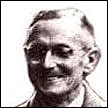
One evening in late November 1949, at a party being held at Henry Arnold’s house, a merry gathering of the Harwell group of scientists, Klaus drew his host aside. Henry Arnold had become a good friend, even in his problematic position as director of security for Harwell. Klaus explained to his friend that he had a problem. Klaus was contemplating whether he should resign from Harwell, he told Arnold.
Arnold pricked up his ears. He had been alerted by MI6 that Klaus might be the suspected British nuclear scientist who had been mentioned in the decoded Venona intercepts. The Americans had finally solved the Soviet code, and now, more than three years after the fact, a combined effort of the United States Army and the FBI had decoded messages from 1943 to 1945 that Russian agents had transmitted to Moscow, and return messages from KGB Headquarters. Unknown to Klaus, Arnold had been observing him for a number of weeks.
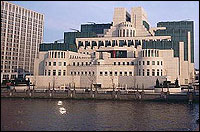
Fuchs explained that his father had accepted a professorship in East Germany, and that he wondered whether that might compromise his security clearance. Arnold said he did not think it would be a problem, but suggested that Fuchs speak to William Skardon, who was with M15 and might know about such things.

On December 21, 1949, Arnold introduced his friend to Skardon and left the two to chat alone. Skardon, a tall man who smoked a pipe, invited Klaus to sit.
Klaus described his concern about his father accepting a professorship in theology at the University of Leipzig in East Germany. Would he be a security risk because of it?
Skardon said he did not think so, but then startled Klaus by asking:
“Were you not in touch with a Soviet representative while you were in New York? And did you not pass on information to that person about your work?
“I don’t think so,” he answered ambiguously.
“Skardon told him there was ‘precise information which shows that you have been guilty of espionage on behalf of the Soviet Union.'” ( Richard Rhodes, Dark Sun)
After another hour, with Klaus admitting nothing, other than having once been a member of the German Communist Party, Skardon suddenly stopped and asked Klaus to get in touch with him if he had anything else he wanted to discuss with him.
The Christmas holidays passed. Despite some jovial Christmas parties, Klaus became more and more concerned. Finally, two weeks into the New Year, Klaus knocked at the door of Arnold’s office and told his friend he needed to speak again with Skardon.
Arnold looked up from the papers he was working on and promised to call Skardon for Klaus.
* * *
Klaus headed to London. Paddington Station was austere. Britain had not yet recovered from the war, and London was a grim place, particularly on a gray January day. He walked the half-mile to MI5 headquarters, past one of the tobacco shops where he had once met with the Girl from Banbury, handing her documents, which she silently accepted, then disappearing into an entrance to the Underground.
The lift to the third floor, to Skardon’s office, creaked slowly. He walked down a corridor with beige walls, interrupted by doors with frosted glass windows. Finally, he arrived at Skardon’s office. He took a deep breath and went in. A middle-aged secretary looked up from her desk.
Before the secretary could reply, Skardon came out of his office to greet him.
Once seated at the plain table in what was, in reality, an interrogation room, Klaus began to speak. Klaus told Skardon briefly that he had been giving secrets to Soviet Russia since 1942. Skardon stopped him and called in a stenographer.
Skardon again asked Klaus what secrets he gave to the Russians. Klaus explained that he could only tell him what he did and that he could not discuss the secret material with Skardon.
Three hours later, Klaus looked over the statement he had given Skardon and signed it. Skardon initialed each page. It was done. Klaus Fuchs had formally confessed. Yet, Skardon was puzzled. While Fuchs had appeared to tell all all, that is, except the scientific information and had been eager to confess, he didn’t seem to realize the extent of his betrayal. Queer duck, Skardon reportedly thought. Here he’s told me about being a Russian spy for seven years, but he doesn’t seem to have a clue to the seriousness of it all.
A meeting was set up with Michael Perrin. Klaus returned to Harwell. Three days later he again made the train ride to Paddington Station, and then walked to the War Office. There he described to his boss, his old friend, Perrin, the material he had given to Ursula Kuczynski and Harry Gold. Klaus signed a second statement, and once again took the train back to Harwell.
After Fuchs had left, Skardon asked Perrin how much he thought Klaus’ spying had done.
Perrin considered the effect devastating. Klaus had literally given the Russians the plans to the plutonium bomb.
On February 2, 1950, Commander Leonard Burt of Scotland Yard read Fuchs the charges and placed him under arrest. Klaus was pale and shaken. He turned to Perrin and asked him if he knew that his arrest would damage Harwell. Fuchs’s only thought was that the enterprise he loved so well Harwell would be ruined by his arrest. Sadly, Fuchs was mistaken. Harwell and his colleagues would carry on very well without him.
The next day in the Bow Street Magistrate’s Court, Klaus Fuchs was arraigned. Asked if he had any questions, Klaus quietly said that he had none. With that, he was remanded to custody and sent to Brixton Prison until a preliminary hearing could be held the following week. Two weeks after that, Klaus Fuchs was to be tried for violating the Official Secrets Act.
The British were determined to minimize the damage. Fuchs was to be tried with a minimum amount of classified information being revealed. Most of all, the fact that Britain was engaged in developing its own atomic bomb could not be divulged. In the United States, J. Edgar Hoover was furious. He wanted Fuchs, but, if he could not have him, he wanted one of his agents present at his trial. The British resisted, but after increasing pressure from the Americans, an observer was allowed.
The Old Bailey was Britain’s most famous court building. It was a grim 19th century structure, complete with a prisoner’s dock and a heavy, gloomy atmosphere presided over by robed and bewigged justices. Countless famous cases had been decided in that very courtroom, from the trials of Oscar Wilde to the conviction of the World War II traitor, Lord Haw Haw. A number of the accused had left that courtroom and had been escorted, eventually, to the gallows.

Before appearing for his trial, Klaus conferred with his chief counsel, Derek Curtis Bennett. “What will happen to me?” Klaus asked. “Will I be executed?”
“My dear chap,” Curtis Bennett said, amazed at the naiveté of his client. Bennett explained that the penalty for violating the Official Secrets Act was a maximum of 14 years in prison.
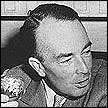
(CORBIS)
The trial began at 10:30 in the morning. Klaus, pale and wearing a brown suit, seemed detached, as if he were a spectator and not the accused. The Crown’s chief prosecutor was Attorney General Hartley Shawcross, famous for his work at the Nuremberg Nazi war criminals trial. In the audience were a number of lesser royalty, reporters and the curious. J. Edgar Hoover’s observer was also there, not as an FBI agent, but as a diplomat temporarily assigned to the American Embassy. Shawcross calmly outlined the charges. Portions of Klaus’s two statements were presented in evidence, and the only witness called was Skardon. Nothing scientific was revealed, and the defense presented no evidence.
Lord Chief Justice Goddard pronounced the sentence. “You have betrayed British protection with the grossest treachery. You have followed the pernicious creed of communism. You have done irreparable harm to British and American interests. Your crime is only thinly differentiated from high treason. But under the law, I am prevented from sentencing you to any fate other than imprisonment. It is therefore the judgment of this court that you be sentenced to the maximum penalty allowable under the law. You will be taken to prison, and there you shall remain for a period of 14 years.”
With that pronouncement, Klaus Fuchs, atom spy, was dispatched to Brixton Prison. It was noon. The entire trial had lasted a mere hour and a half.
Perrin and his superiors were pleased. Nothing of Britain’s efforts to build an atomic bomb had been revealed. Its existence remained a secret. In particular, Henry Arnold, director of security and Klaus Fuchs’s friend, was relieved that the proceedings had revealed nothing about what was happening at Harwell.
From Klaus’s confession, it became clear to the FBI that “Raymond” would have to be found, and found quickly, if the Americans were to stop the Russian espionage program. The arrest and confession of Fuchs had forced President Truman to authorize the research program of the “Super,” the hydrogen bomb. The continued theft of nuclear secrets couldn’t continue. Agents visited Kristel, and obtained a description of Raymond. Based on Fuchs’s characterization of Raymond as a chemist and from Philadelphia, and Kristel’s recollection of him, the FBI narrowed the pursuit to a few men, only one of whom had been in Cambridge, Massachusetts in 1944. The path led to Harry Gold.
Gold endured hours of questioning, denying any involvement in spying. He maintained that he had never been west of Chicago. But in a search of his apartment, the FBI found, jammed behind a bookcase, a map of downtown Santa Fe.
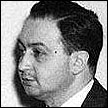
(CORBIS)
At precisely the same time, in Brixton Prison, FBI agents were interviewing Fuchs in prison, with William Skardon present. They showed Fuchs still photographs from a surveillance film made of Gold. Fuchs was not sure. The next day, Fuchs identified one photograph. “Yes, that’s him,” he reportedly told the agents. “That is the man I knew as Raymond.” While this confirmation was important to the case against Harry Gold, it was unnecessary for the moment. Harry Gold was confessing, not only to his service as Fuchs’s contact, but as the courier for David Greenglass and the Julius Rosenberg spy ring.
* * *
Late in 1957, Emil Fuchs, now 79 years old, visited his son in prison. He told him it was time to think about his future. He suggested his son return to East Germany and return to a scientific profession.
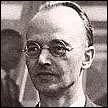
Fuchs
On June 24, 1959, a middle-aged slim man, balding, wearing steel-rimmed glasses, boarded a Polish airplane at Heathrow Airport. He was traveling under the name of Mr. Strauss. He was wearing the same brown suit that he had worn at his trial. Klaus Fuchs was now free.
He was met at the airport by his nephew, the son of his older sister, Elisabeth. Two days later, he became a citizen of the East German Republic. A month later, he was made assistant director of the Institute for Nuclear Physics near Dresden. Ten days later, he married an old friend from his Paris days, Greta Keilson. He settled into a quiet life of science and domesticity.
The East German Republic honored him. In 1979, he received the Order of Karl Marx. He only wished that his father, who died in 1971 at the age of 93, could have been present.
Only a few visitors from England ever saw Klaus Fuchs again. As much as he had loved England and been a quite proper Englishman, he had severed ties with his adopted country, the country he had betrayed. Still, he believed in communism. He always would, even to the day he died at the age of 76, on January 28, 1988, 38 years and a day after he had confessed to William Skardon.
* * *
“I don’t remember him very well,” Edward Teller was saying to an interviewer. “A quiet man, not very impressive. A decent scientist, all in all.” Teller was an old man, bent over, squinting as the sunlight poured through the window next to his regular table at the Cosmos Club.
“How important was the material he gave Russia?” the interviewer asked.
“Oh, not very important. I’m sure the Russians knew how to build a bomb without Fuchs’s stuff.”
“Philip Morrison feels otherwise. He says that Fuchs helped the Russians develop their bomb two years sooner than they might have.”
“Does he? Well, perhaps he’s right. I think that Ted Hall might have been as important. Brilliant young man. I recommended him to graduate school at the University of Chicago. I was very surprised when the KGB files identified him. Where is Hall now, do you know?”
“He died last year. In England, where he’d been for over 35 years. He never completely admitted his involvement. Morrison says that Hall’s information merely confirmed what Fuchs had delivered to the Russians. Do you agree with him?”
“I don’t know. It was all so long ago. Fuchs was smart, there’s no denying that. I suppose Morrison could be right.” Teller paused. “You know, now that I think of it, my main recollection of Fuchs is that he smoked and drank too much. Perhaps he had some sort of psychological defect. Well, it was a long time ago. I’m not sure all of this makes any difference now.”
The interviewer switched off his tape recorder. “It did at the time,” he said. “It certainly did at the time.”
There are two biographies devoted exclusively to the life and times of Klaus Fuchs, although both were published before Fuchs’s death in 1988. Both cover the same material, in substantially the same way, although one, by Williams, provides more family history and an explanation of the espionage apparatus. Both are worth reading.
An important book dealing with the Soviet atom bomb program and Fuchs’s role in it is Dark Sun, by Richard Rhodes. The significance of what Fuchs provided and its relationship to the Soviet timetable is well drawn. Since this account concentrates heavily on what was proceeding in Fuchs’s life, and does not describe in detail the corresponding events in Soviet Russia, the reader is directed to this work for the Russian perspective.
Two early books, published not long after Fuchs’s unmasking and conviction, are Rebecca West’s New Meaning of Treason and Alan Moorehead’s The Traitors. Both are successful in attempting to understand Fuchs’s psyche and his motivations, and both are exciting reading.
A number of other books have sections or extended references to Fuchs. The best of these are the memoirs of Robert Lamphere, who was the FBI agent most concerned with the Venona code-decrypting project and the agent who interviewed Fuchs in prison. The author of this account had the opportunity to interview Mr. Lamphere in 1988, and is most appreciative of his insights into not only the Fuchs case, but the Rosenberg case as well. For insights into how the Venona transcripts played a role in the identification of Fuchs and Harry Gold, a recent book by Nigel West, Venona, is recommended.
Two very newly published books, The Brother, by Sam Roberts, and Edward Teller’s Memoirs have sections on Fuchs that have interesting material. Edward Teller’s autobiography, in particular, has a fascinating account of the Los Alamos years, and confirms most of this author’s impressions about this disagreeable man.
Some of the people who appear in this account are described more fully in the Crime Library articles about the Rosenbergs and the Cambridge Spies.
The following list of books represents a fraction of the literature available on the atomic bomb, atom spies, and the nuclear arms race. More are published every year. Those listed have been the most useful in describing Klaus Fuchs and his story.
* * *
Albright, Joseph, and Marcia Kunstel. 1997. Bombshell: The Secret Story of America’s Unknown Atomic Spy Conspiracy. Times Books
Holloway, David. 1994. Stalin and the Bomb: The Soviet Union and Atomic Energy. Yale University Press
Hyde, H. Montgomery. 1980. The Atom Bomb Spies. Hamish Hamilton
Lamphere, Robert J. 1986. The FBI – KGB War: A Special Agent’s Story. Random House
Moorehead, Alan. 1963. The Traitors. Dell
Moss, Norman. 1987. Klaus Fuchs: The Man Who Stole the Atom Bomb. St. Martin’s Press
Pilat, Oliver Ramsay. 1952. The Atom Spies. Putnam
Roberts, Sam. 2001. The Brother: The Untold Story of Atomic Spy David Greenglass and How He Sent His Sister, Ethel Rosenberg, to the Electric Chair. Random House
Rhodes, Richard. 1995. Dark Sun: The Making of the Hydrogen Bomb. Touchstone
Rose, Lisle A. 1999. The Cold War Comes to Main Street. University Press of Kansas
Schrecker, Ellen. 1998. Many are the Crimes: McCarthyism in America. Little, Brown
Sudoplatov, J.L., et al. 1994. Special Tasks: The Memoirs of an Unwanted Witness, a Soviet Spymaster. Little, Brown
Teller, Edward. 2001. Memoirs: A Twentieth-Century Journey in Science and Politics. Perseus
West, Nigel. 2000. Venona: The Greatest Secret of the Cold War. HarperCollins
West, Rebecca. 1964. The New Meaning of Treason. Viking
Williams, Robert Chadwell. 1987. Klaus Fuchs: Atom Spy. Harvard University Press
